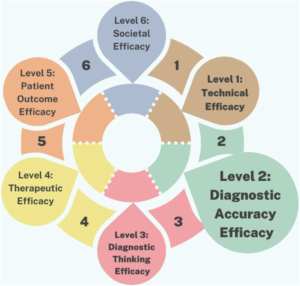Uncovering the Overlooked Flaws in AI-Driven Safety Solutions for Workplace Health

The Gaps in AI-Enhanced Safety Solutions
Overview of AI in Ergonomics
The rise of artificial intelligence (AI) in ergonomics has sparked interest and excitement in its potential to enhance workplace safety. However, there are significant concerns over whether these technologies actually capture the most crucial hazards. As someone who leads a team of ergonomists, I want to share my observations about the current state of ergonomics software, especially those powered by AI.
Insights from Experience
With 35 years of hands-on experience in ergonomics, I have witnessed numerous technological advancements. My team employs biomechanics software to assess the physical strain on workers while considering the effects of fatigue from repetitive tasks. We strive to incorporate the latest developments in technology, meticulously reviewing and licensing the best available tools each year.
When exploring AI applications in ergonomics, it’s common to come across numerous programs that utilize markerless motion capture to automate assessments. We hope these innovations will allow us to work more efficiently, enabling us to focus on problem-solving rather than just analyzing data.
The Role of Professional Ergonomists
To understand the role of ergonomists better, it’s essential to delve into our systematic process of analyzing tasks. Though this process can be lengthy, it is crucial for ensuring workplace safety. Here’s a step-by-step breakdown of what we typically do when assessing tasks for ergonomic risks:
Selecting Tasks: We survey both employees and supervisors to identify tasks with potential hazards. For jobs with several demanding tasks, a comprehensive examination is necessary.
Documentation: We either photograph or record videos of the tasks to provide a visual reference for analysis.
Measurements: We determine the height and reach of workers’ hands in relation to their feet. Additionally, we measure the forces exerted by the hands, which may include weights, pushes, pulls, pinches, or grips. Each effort is recorded multiple times to ensure accuracy.
Timing Efforts: We track how often and how long these efforts are applied. If there is variability, we gather multiple measurements to find averages.
Data Analysis: All collected data is input into specialized software, like "Work(s)" software, to assess how strenuous a task is for the most physically limited worker. The objective is to protect at least 75% of the workforce, including stronger employees.
- Cumulative Assessments: If needed, we conduct similar evaluations for all efforts tied to a job and combine them to analyze cumulative demands.
Limitations of AI in Ergonomics
While AI has the potential to advance ergonomics assessments, it is essential to recognize what these systems might overlook. The reliance on automation and software may lead to gaps where critical hazards could be missed. A thorough human assessment, with a focus on understanding the context and physical limitations of workers, remains vital. Ergonomists bring nuances and insights that AI alone may fail to capture.
Innovations Yet to Come
Although AI can automate many tasks, it should not replace the nuanced understandings that a trained ergonomist provides. As the technology matures, we hope to see advancements that complement human expertise rather than replace it. The future of workplace safety will likely involve a collaborative approach where AI tools support ergonomists in their efforts to create safer work environments, but the expertise of skilled professionals will remain central to identifying and mitigating risks effectively.






